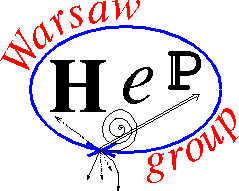SEMINARIUM FIZYKI WIELKICH ENERGII
Dnia 7 marca (piątek) o godzinie 11:30, w sali B2.38 odbędzie się seminarium, na którym zostanie wygłoszony referat pt.:
„The scalar sector – story so far – from the ATLAS perspective”
Referuje: dr hab. Paweł Bruckman de Renstrom (IFJ PAN)
The long-awaited discovery of the Higgs boson has fundamentally changed the paradigm of experimental particle physics. The BEH mechanism turned from an attractive hypothesis into a physical reality. The detailed study of the properties of the only known fundamental scalar, as well as the direct search for an extended scalar sector, became the main focus of the LHC physics program. Based on ATLAS results, the talk will briefly review the current experimental status of the 125 GeV Higgs boson and focus on the searches for BSM phenomena in the scalar sector.
Serdecznie zapraszamy
dr hab. Katarzyna Grzelak
prof. dr hab. Aleksander Filip Żarnecki

